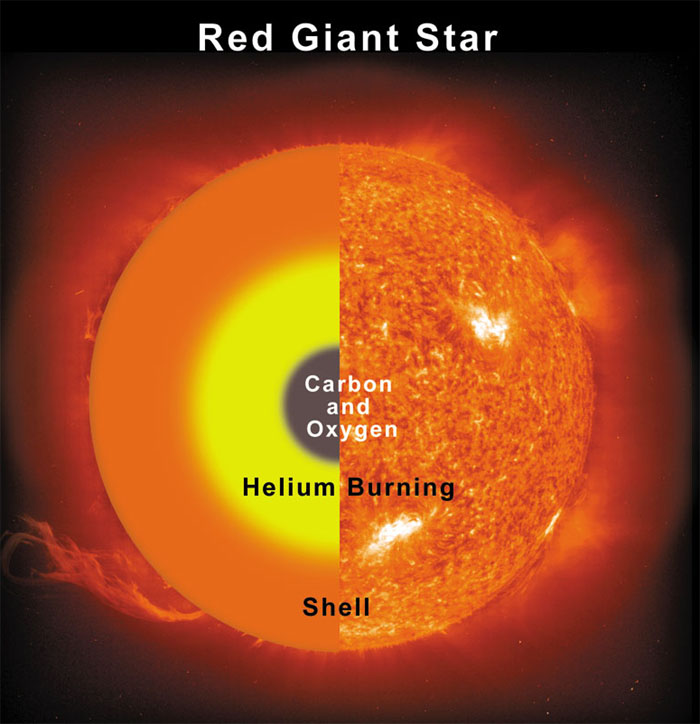
A red giant star is a star with a mass like our Sun that is in the last phase of its life. Hydrogen fusion reactions have become less efficient in the core region, and with gravitational collapse of the core, the fusion reactions now occur in a shell surrounding the core. This increases the luminosity of the star enormously (up to 1000 times the Sun) and it expands. The outer layers then cool to only 3000 K or so and you get a red star, but its size is now equal to the orbit of Mercury or Venus...or even the Earth! After a few more millions of years, the star evolves into a white dwarf-planetary nebula system and then it's all over for the star.
The closest red giant star to our sun is Gamma Crucis (also referred to as Gacrux). It is the third-brightest star in the Southern Cross. Unlike its blue-white neighbors in the constellation, Gacrux is a bright red giant. Gacrux is also considered the nearest red giant to Earth, at a distance of roughly 88 light years.
Even larger 'supergiants' can outshine the sun by over a million times. These are very massive stars seen just before their supernova stags. Betelgeuse, Antares and Arcturus are such stars. The above two images show a normal red supergiant star with most of its energy coming from a shell of hydrogen fusion activity just outside the dense core. Below is an image of the actual surface of the closest red supergiant to our sun. Betelgeuse is seen with the Hubble Space Telescope. Its irregular, non circular shape suggests that there are very bright active regions on its vast surface.

Return to Dr. Odenwald's FAQ page at the Astronomy Cafe Blog.